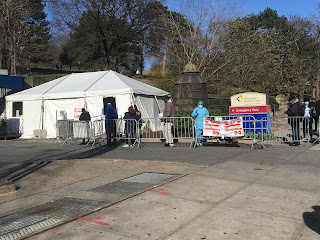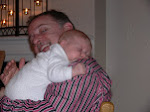Thursday. The Girlfriend wakes with an onset migraine, from which she occasionally suffers. She takes one over-the-counter migraine pill: acetaminophen, aspirin, lots of caffeine. (It shrinks inflamed blood vessels and thus reduces migraine pain.) Within 30 minutes she feels better than she has since Sunday, and, after her usual two espressos, she’s ready to take on the day. By lunchtime she’s completed three work tasks and done a fair bit of a jigsaw puzzle.
“Look at you,” I say. “It’s like watching the last act of ‘Logan.’” I explain [spoiler alert for those who, like The Girlfriend, haven't seen “Logan,” the decade’s only superhero movie I’ve thought about outside the cineplex for more than 15 minutes]: In crisis, an aged Wolverine takes a serum that temporarily restores his youthful vigor, and for several minutes he lays waste to bad guys. Then the serum wears off, and a bad guy kills him.
After lunch The Girlfriend feels tired. I suggest a walk and she agrees, but as we hit the sidewalk she says she’ll just go to the park bench where she sat in the sun a couple of days ago. If anything, she’s moving more slowly. When I return to the park 40 minutes later she’s gone back inside, where she passes the evening spent as a weak kitten. Still: No fever, no coughing, less achiness. Much better.
The Kid, though still bedridden, is better, too. She jumps metaphorically when I suggest bringing some of the St. Louis Gooey Butter Cake I made yesterday. I drive to bring to The Girlfriend’s children some cake and a package of yeast (they want to make bread), swapping for soup they made the previous night. At The Co-Parent’s house The Kid still can’t travel much past the stair landing, but she wolfs down a piece of cake. My worry abates.
With fewer cars on the road, drivers get aggressive. Two pull U-turns that force me to jam on the brakes. A jacked-up flatbed truck roars ahead of me, then floors it to pass one car at a time across Ocean Boulevard’s double-yellow line; with little oncoming traffic and cops busy elsewhere, driving is a video game.
All week from the 12th-floor apartment The Girlfriend and I have been hearing sirens, mostly ambulances, from all over north Brooklyn. Today they seem more ubiquitous, often two or three at once. I walk west on DeKalb to pass the Brooklyn Hospital Center (where, as it happens, a Times reporter has been embedded this week).
A dozen or so people — all of color — line up six feet apart outside a tent erected in the hospital parking lot; a staffer clad head to booties in blue antiviral gear distributes clipboards. The emergency room entrance is on the hospital’s other side, but I see two masked and gloved drivers scrubbing down ambulances with squirt bottles and paper towels. A young man wanders toward the tent; two onlookers direct him to the back of the line. Everyone wears masks; everyone’s mood is somber.
I cross Flatbush Avenue to the ghost-town blocks of Fulton Mall: a few walkers, a couple of street people. Suddenly, a stream of young men emerges around a corner: construction workers, ending a shift on one of the ubiquitous glass-and-chrome, 30-odd-floor apartment towers of downtown Brooklyn, where their “essential work” continues apace.
I walk home through Fort Greene Park. The long triple-flight of steps on the west side of the Prison Ship Martyrs’ Monument is jammed, with apparently every denizen of north Brooklyn’s closed gyms and spas running, stretching, stair hopping, rope jumping, squat lunging, sit- and push-upping. From atop the hill I hear at least five separate sirens.
Back at my apartment compound, a middle-aged man ends a loud conversation with an elderly woman: “Oh, I know you can’t trust them. But I believe people are dying. And if people are dying, I’m going to trust them enough to do what they say. I’m staying six feet away from people. I’m wearing my mask. I’m staying inside.”
The United States on Thursday passes China as the nation with the most Covid-19 cases. New York State sees cases up another 21 percent, to 37,258. Deaths in the state jump by 100 (35 percent), to 385.
At home, The Girlfriend says she’s read about a concept that’s helping her process what’s been waking her up at night: ambiguous grief. She’s worried about, among other things, her children’s health; their futures, as both near the end of college with careers in flux; her aging parents; her work projects that have been put in limbo; and her house sale (in Southern California) and purchase (in Brooklyn), both of which are postponed for who knows how long.
The article says a classic example of ambiguous grief is having a loved one with dementia: they’re physically present, mentally and spiritually absent. Having lost my father and my mom’s two sisters to dementia within the past decade, my family grew accustomed to that particular twilight zone.
“Ambiguous grief can leave us in a state of ongoing mourning, so it’s important for us to stay grounded in the present,” the article says. “Instead of futurizing or catastrophizing — ruminating about losses that haven’t actually happened yet (and may never happen) — we can focus on the present.”
That’s the best thing about the blog, I tell her. At least I have something to focus on.
We fall asleep to the sound of sirens dopplering in the distance.


No comments:
Post a Comment